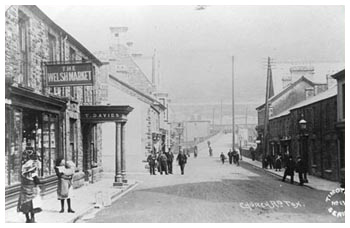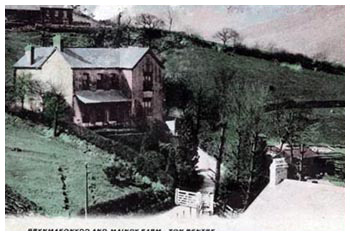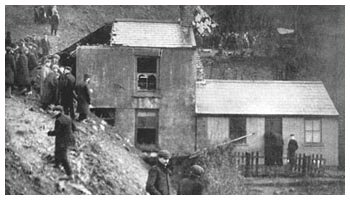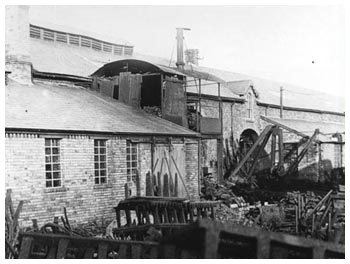
Pentre |
|
The Welsh word Pentref usually means village or ‘homestead', but in the case of Pentre, Rhondda it refers to an old farmstead and its buildings which was situated in the area. This farm was quite substantial in size and was known as ‘Y Pentref' long before an actual village grew up in the area with the advent of the mining industry. |
|
| However the increasing need for coal, and the profits it could bring led inevitably to speculators invading all parts of the Rhondda Valley. Thus in 1857 Edward Curteis of Llandaff leased the mineral rights of Tyr-Y-Pentre from Griffith Llewellyn of Baglan, and immediately afterwards the Pentre and Church levels were opened. By the beginning of 1864 shafts had been opened by the ‘Pentre Coal Company' to the to the deeper steam coal seams and a second pit was sunk at Pentre Pentre at that time became one of the largest and most profitable collieries in the Valley. It was at this time Pentre as an actual village in its own right really came into being. |  |
 |
By the early 1900's Pentre was a bustling township, and was seen as the main shopping area for the top end of the Rhondda Fawr, boasting amongst others six chain stores and two Co-ops. However with the closure of the Pentre colliery it was superceded by Treorchy. It also became the centre of local government in the Rhondda when the Council Offices were built in Llewellyn Street in 1882. Pentre also boasts ‘The Cathedral of the Rhondda', St.Peters Church which was consecrated in 1890, and whose impressive tower dominates the Pentre landscape. |
It also boasted, for many years the home of Pentre Breweries, formed in 1875, the beers from which were served in Public houses throughout the South Wales Valleys. |
 |
Above: Cubitt and Llewellyn's Foundry - Established by Griffith Llewellyn of Baglan and William Cubitt, the building is now the Territorial Drill Hall |
Apart from the mines a major enterprise within Pentre was the Rhondda Engine Works run by Messrs. Llewelyn and Cubitt Ltd. a firm of engineers, iron and brass founders. This firm for half a century supplied some of the best-designed and most reliable colliery equipment to mining concerns throughout South Wales. Griffith Llewellyn of Baglan, who owned large areas of land in the Rhondda, and William Cubitt of London, began the enterprise in 1874. Their workshops consisted of an engine-house, iron and brass foundry, boiler shop and a smithy, and were erected on a portion of the Baglan Estate a quarter of a mile from the Taff Vale Railway station. At the turn of the century over 100 expert craftsmen were employed at these works. Before its dismantling in 1915 most of the Rhondda Collieries opened in the previous forty years had been supplied with steel pithead frames, pit cages and many of the other essential equipment associated with the mining industry from the firm of Llewelyn and Cubitt. |
